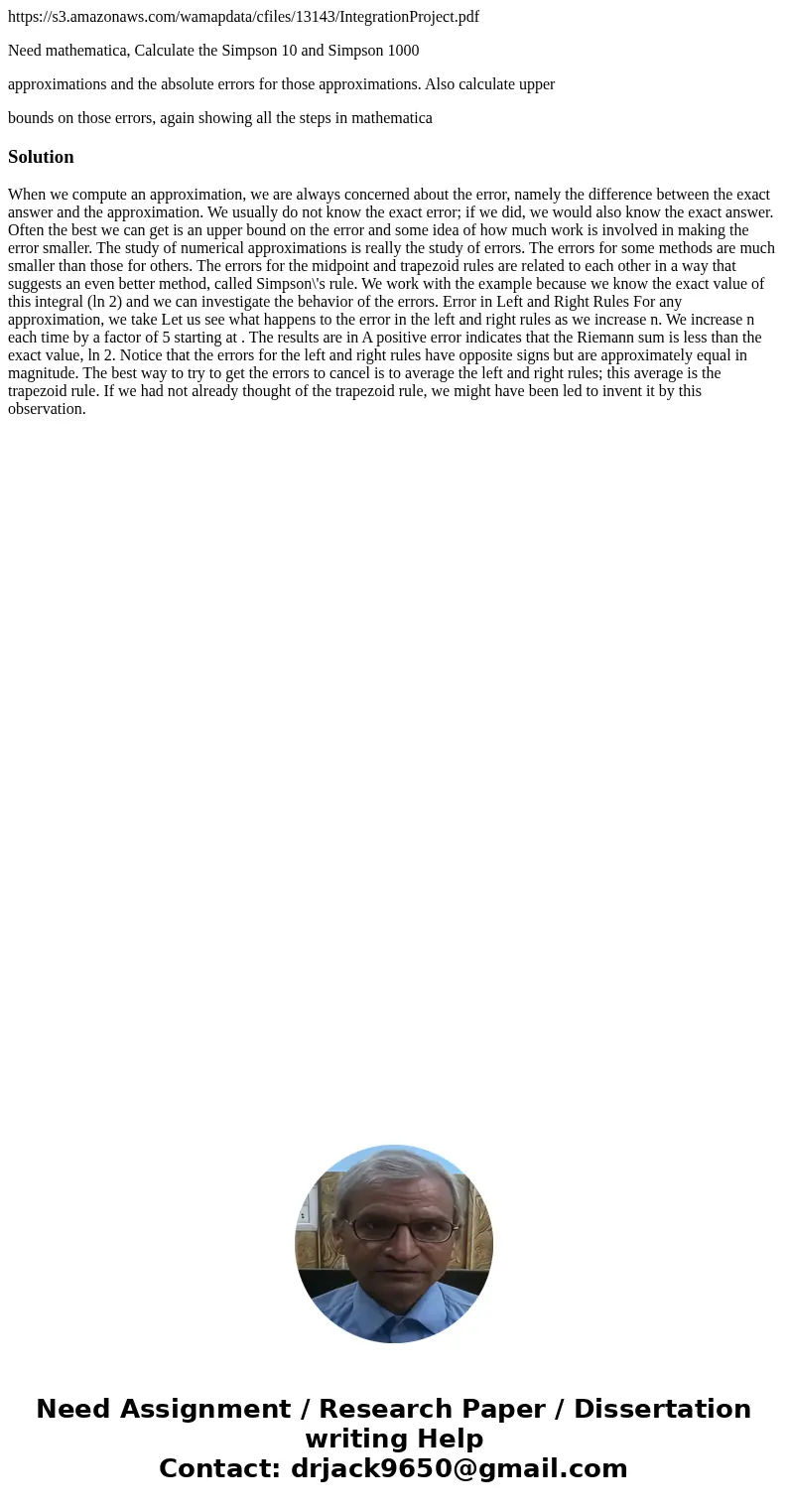httpss3amazonawscomwamapdatacfiles13143IntegrationProjectpdf
https://s3.amazonaws.com/wamapdata/cfiles/13143/IntegrationProject.pdf
Need mathematica, Calculate the Simpson 10 and Simpson 1000
approximations and the absolute errors for those approximations. Also calculate upper
bounds on those errors, again showing all the steps in mathematica
Solution
When we compute an approximation, we are always concerned about the error, namely the difference between the exact answer and the approximation. We usually do not know the exact error; if we did, we would also know the exact answer. Often the best we can get is an upper bound on the error and some idea of how much work is involved in making the error smaller. The study of numerical approximations is really the study of errors. The errors for some methods are much smaller than those for others. The errors for the midpoint and trapezoid rules are related to each other in a way that suggests an even better method, called Simpson\'s rule. We work with the example because we know the exact value of this integral (ln 2) and we can investigate the behavior of the errors. Error in Left and Right Rules For any approximation, we take Let us see what happens to the error in the left and right rules as we increase n. We increase n each time by a factor of 5 starting at . The results are in A positive error indicates that the Riemann sum is less than the exact value, ln 2. Notice that the errors for the left and right rules have opposite signs but are approximately equal in magnitude. The best way to try to get the errors to cancel is to average the left and right rules; this average is the trapezoid rule. If we had not already thought of the trapezoid rule, we might have been led to invent it by this observation.

 Homework Sourse
Homework Sourse